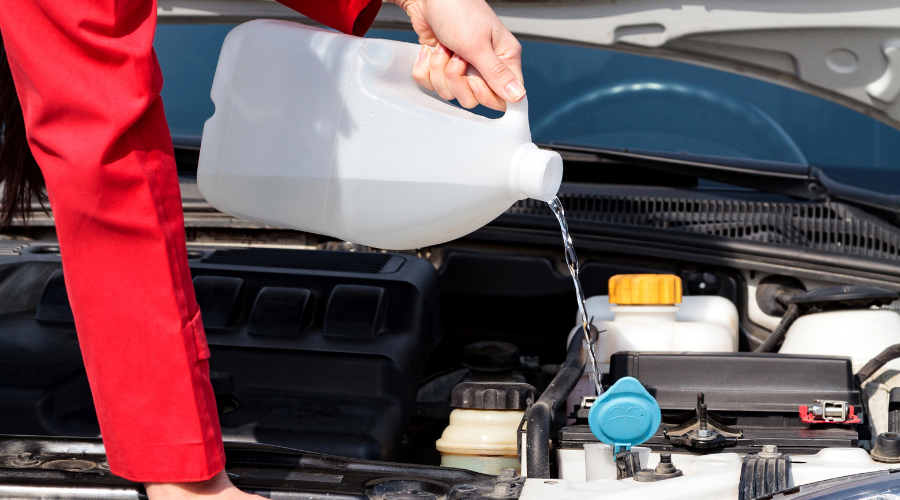

The radiator plastic is a crucial component in any vehicle as it keeps the engine temperature under control and prevents the overheating of the machinery. With continuous operation, radiators tend to develop cracks and start leaking fluid. Once this happens, the radiator should undergo repairs. To fill out the cracks a suitable adhesive needs to be utilized. Epoxy is one such adhesive that is really convenient and efficient. This blog is all about epoxy and how it enhances the functionality and performance of a typical radiator.
Epoxy is an multi-purpose adhesive that is highly preferred for its bonding strength that is resistant to heat and is long-lasting. The adhesive is produced by mixing resin with a hardener. The bond made by the epoxy is hard and chemical-resistant once it is cured.
Adhesive strength: epoxy glues all kinds of surfaces with superb strength, from metals to plastics.
Thermally resistant: this adhesive can withstand moderate to high temperature which means that it remain undamaged in the heated atmosphere of an engine.
Durability: epoxy is wear-resistant and does not come off easily with friction. Moreover, it resists corrosion and withstands elements extremely well.
Epoxy can be used in versatile ways for repairing various auto issues. It can seal leaks, glue components together and strengthen a weak portion that is about to rupture. In radiators epoxy can be quickly used to fill up small cracks or holes for a temporary solution.

In cases of minor cracks in the radiator, epoxy can be used to seal the cracks.
Surface preparation: This involves wiping the area to clear away the dirt and oil.
Mixing: Combine the resin and hardener according to the outlined instructions.
Application: dabbing the mixture on the affected area. The area should be covered completely.
Curing: Leaving the epoxy untouched so that it hardens. This can take several hours to all night.
Small cracks or pinholes in the radiator core.
Small leakages that occur around joints.
Damage in low-pressure areas that are not very critical during operation.
Cleaning agents (alcohol-based agents)
The sandpaper will be used to make the surface texture rough for better adhesion.
Applicators and mixing tools ( spatula)
Heat gun and dryer for fast curing.
Benefits of Using Epoxy to Repair Radiators
Swift Repairs: Small leaks can be fixed at once without delay and this is especially convenient during a journey where substantial downtime is not possible.
Inexpensive: Epoxy can be used to remedy problems without spending on buying a new radiator.
Adaptable: Epoxy adhesive is compatible with metal as well as plastic material so it can be used to fix all kinds of radiators.
Long-lasting: Application of epoxy can lengthen the usage life of radiator as it does not come off easily since it can tolerate moderate heat and pressure on a consistent basis.
Although epoxy is useful it cannot permanently fix a problem and is useless in cases where the damage to the radiator is severe. For serious damage professional repairs is the right option.
During intense operation when the pressure is extreme and the workload on the radiator is heavy epoxy will get damaged and this may complicate the situation.
Epoxy can bond with a wide variety of materials, but the surface needs to be roughened up adequately for the epoxy to perform its function. Hence, if surface preparation is lacking, the epoxy will not be able to bond perfectly.
If the epoxy is applied on a regular basis the cost can accumulate and overtime this expense can even exceed a new radiator's cost.
Epoxy is used:
Minor damage in a non-serious area
A quick repair to continue the journey as soon as possible.
The budget is tight, and replacing the radiator is unaffordable.
Radiator replacement is done when
Serious damage or the damage is in a crucial portion.
Repeated repairs have already been done by using epoxy.
Corrosion has weakened the radiator beyond repair.
You need to assess the damage location and the seriousness of the damage to slect the right approach of either radiator replacement or epoxy application.
Experience: A car mechanic has the skills to evaluate the nature of damage and give the right recommendation.
Tools and materials: Professionals use specialized tools, which leads to better final results.
Warranty: Car repairs mechanical also give a warranty assurance, and this makes the repairs much more reliable.
The epoxy types should be thermal-resistant
Prepare the surface properly before application of adhesive
Take appropriate measures for applying adhesive, such as wearing gloves and working in a well-ventilated zone.
Nonbiodegradable: Disposing carelessly can lead to landfill waste.
Chemical Residue: Epoxy residue that is left on a surface can pollute the environment if it evaporates.
1. Does epoxy hold up to the heat and pressure of a radiator?
Most good-quality epoxies can tolerate the moderate heat and pressure that a radiator puts out, but they will fail under extreme conditions.
2. Is epoxy safe for plastic radiators?
Epoxy is safe for plastic radiators, provided the surface is clean and properly prepared.
3. How long does an epoxy repair on a radiator last?
Epoxy repairs can last several weeks to months, depending on the location of the damage, radiator conditions, and quality of application.
4. What are the best epoxy products for radiator repairs?
Find epoxies that are specifically designed for automotive use, such as JB Weld RadiatorWeld or similar high-temperature products.
5. Can I use epoxy on large radiator leaks?
Epoxy is not suitable for large leaks or extensive damage. Such problems usually require professional repair or replacement.
Epoxy is a wonder in minor radiator repairs, finding the ideal mix between comfort and productivity. If you know how it works and where its limitations are, you'll make the best car selections.
That is why epoxy is an ideal material for minor reparative work on radiators; they are also very cheap and can be used as a temporary solution. Because of advantages such as adhesive strength, heat resistance, versatility, drivers can fix minor leaks and cracks. Nevertheless, epoxy is not without its drawbacks, thus it is ideal for use mostly as a temporary solution rather than a permanent fix. Understanding the severity of the damage and weighing the pros and cons of epoxy use ensures informed decisions about radiator maintenance.
The automotive industry is constantly evolving, with new technologies and materials continually
READ FULLMost of us don't think about our car’s radiator plastic tank until we have to. One day, eve
READ FULLThe process of locating the correct plastic tanks to use in an auto radiator seems like looking f
READ FULL